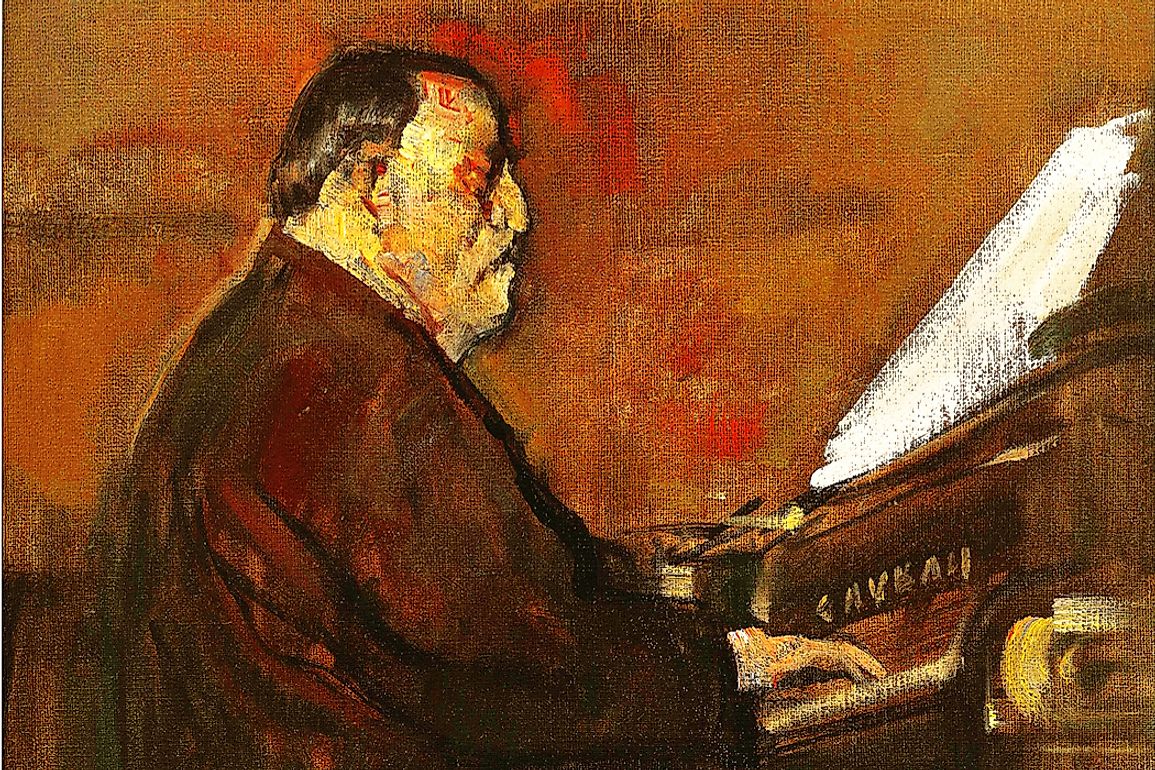Camille Saint Saens - Famous Composers in History

Camille Saint-Saëns was a French conductor, composer, pianist, and organist of the romantic era. Saint-Saëns was a musical prodigy who made his musical debut at age ten. He served as an organist for more than two decades before resigning and becoming a successful freelance composer and pianist whose services were in demand both in the United States and Europe.
Early Life
Charles-Camille Saint-Saëns was the only child of Jacques Saint-Saëns, an official at the interior ministry and his wife Francoise Clemence. He was born on October 9, 1835, in Rue du Jardinet, Paris. Jacques Saint-Saëns died two months after his christening and due to his health; Camille Saint-Saëns' mother took him to the Corbeil where he lived with a nurse for two years. Before turning three years old, Saint-Saëns displayed a perfect pitch, and he even enjoyed selecting tunes on the piano. Saint-Saëns learned basic pianism from his great aunt before becoming the student of Camille-Marie Stamaty.
Saint-Saëns finally made his concert debut at age ten at Salle Pleyel in a program which included Mozart’s and Beethoven’s 3rd piano concertos. In 1848, he joined the Paris Conservatoire, a renowned music academy where he was encouraged to specialize as an organist. As a student, he composed a choral work called the Les Djinns and an A-major symphony. He competed for the musical award the Prix de Rome in 1852, but he was not successful. He later won the Societe Sainte-Cecile competition in the same year.
Career
After leaving the musical academy in 1853, Saint-Saëns became an organist at the church of Saint Merri where he earned a comfortable income. It also allowed him enough time to focus on composing and pursue a career as a pianist. He again won the Societe-Cecile competition with his opus two, the Symphony in E-flat. In 1858, he became the organist of the La Madeleine, the official empire’s church. In 1861, Saint-Saëns
became a teacher at the Ecole de Musique Classique et Religieuse where he taught piano lessons. He resigned from his teaching post in 1865 to pursue his career as a pianist. Saint-Saëns finally premiered his second piano concerto in 1868 which earned him the respect and adoration he deserved both in France and abroad. Saint-Saëns served in the National Guard during the Franco-Prussian war. To help promote French music, Bussine and Camille formed the Societe Nationale de Musique with him as the vice-president. He later resigned and became a freelance pianist and composer.
Challenges
Saint-Saëns married in his late thirties, but his marriage was not successful. Saint-Saëns and his wife Marie Truffot had two sons who died in infancy. The marriage did not last as Saint-Saëns blamed his wife for the accidental death of his eldest son.
Major Contributions
Saint-Saëns wrote some piano concertos including the Egyptian Concerto in F-major while he was in Luxor. He composed four symphonic poems which followed the models used by Liszt and of the four; the 3rd symphony was the most famous. Saint-Saëns composed about ten operas in his lifetime, but he is mostly known for his "Samson and Delilah" opera which he wrote in 1877. He also wrote over 49 chamber works from the 1840s up until his last years. One of his famous chamber works was the Piano Quintet which he composed in 1855.
Death and Legacy
Saint-Saëns performed his final recital in November 1921 at age 86. He left for Algiers a month later and on December 16, 1921, he died of a heart-attack. His body was taken home, where he was laid to rest at the Cimetiere de Montparnasse in Paris.
Saint-Saëns was the first renowned French composer to be accepted as an opera house in an era when people believed organists, pianist and symphonists cannot write opera. He was also the first major French composer to write piano concertos successfully. Saint-Saëns pioneered recorded music; in fact, the London gramophone company sent their producer Gaisberg to Paris to record his work.











